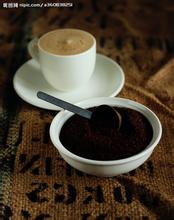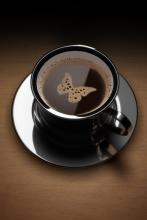Introduction of Burundian Coffee Flavor and Taste characteristics of Burundian Coffee
Burundi chooses July 3, 2010 as its National Pavilion Day
Republic of Burundi (The Republic of Burundi, La R é publique Du Burundi).
[area] 27834 square kilometers.
[population] 7.4 million (2005), with an annual growth rate of 3.4 per cent. It consists of three tribes: Hutu (84%), Tutsi (15%) and Tewa (1%). The official languages are Kirundy and French, Mandarin is Kirundy, and some residents speak Swahili. 75% of the residents believe in Catholicism, 15% in Protestantism, 2% in Islam, and the rest in primitive religion.
[capital] Bujumbura (Bujumbura), population 400000 (2000). The annual average temperature is about 22-26 ℃.
[important Holiday] July 1 National Day (Independence Day No. 1 booth)
It is called "Welcome area". It is the reception area of the pavilion. Useful information related to Burundi will be provided.
The second exhibition area
Here, Burundian agricultural products, fishery products and traditional medical products, as well as a variety of industrial products and handicrafts will be presented one by one. The gifts of nature and Burundian handicrafts will vividly express the theme of coexistence and interaction between man and nature.
Third exhibition area
This is the most lively area in the pavilion. Internationally renowned Burundian drummers and famous dancers dressed in Burundian traditional costumes will show you the original Burundian customs.
Fourth exhibition area
The last area is the bar and restaurant area. Here, you will have the opportunity to taste Burundian specialties such as Burundian coffee and tea, as well as the dim sum pavilion from Lake Tanganyika in Africa to showcase the achievements of Burundi in the practice of sustainable development, as well as the successful experiences of Bujumbura, the capital, and rural development, mutual benefit and win-win in the process of national reconstruction and economic recovery. The pavilion is divided into four exhibition areas: the first exhibition area is the "welcome area"; the second exhibition area displays Burundian agricultural products, fishery products, traditional medical products and various industrial products and handicrafts; the third exhibition area is custom performances; the fourth exhibition area is the bar and restaurant area.

Important Notice :
前街咖啡 FrontStreet Coffee has moved to new addredd:
FrontStreet Coffee Address: 315,Donghua East Road,GuangZhou
Tel:020 38364473
- Prev

Mexican Coffee Flavor and Taste introduction Fine Coffee beans Aldumara Coffee Mexican Coffee Brand
It was only in Ethiopia that coffee was wild at first and then was grown because local residents began to like the black and hot drink. In recent years, as the market price of coffee has fallen to an all-time low, many coffee producing countries, including Mexico, have suffered an unprecedented crisis, so they all tend to increase their own coffee consumption.
- Next

Taste of Ugandan Coffee Flavor Manor area introduces Ugandan boutique coffee beans
In order to improve the quality and reduce the cost of coffee, Uganda cancelled the exclusive management right of the Coffee Management Committee (Coffee Marketing Board, referred to as CMB) in November 1990. Most of the work originally undertaken by the Coffee Management Committee has now been handed over to the cooperative organization. Privatized coffee accounts for 2% of the country's export revenue, so the government levies coffee shops.
Related
- Detailed explanation of Jadeite planting Land in Panamanian Jadeite Manor introduction to the grading system of Jadeite competitive bidding, Red bid, Green bid and Rose Summer
- Story of Coffee planting in Brenka region of Costa Rica Stonehenge Manor anaerobic heavy honey treatment of flavor mouth
- What's on the barrel of Blue Mountain Coffee beans?
- Can American coffee also pull flowers? How to use hot American style to pull out a good-looking pattern?
- Can you make a cold extract with coffee beans? What is the right proportion for cold-extracted coffee formula?
- Indonesian PWN Gold Mandrine Coffee Origin Features Flavor How to Chong? Mandolin coffee is American.
- A brief introduction to the flavor characteristics of Brazilian yellow bourbon coffee beans
- What is the effect of different water quality on the flavor of cold-extracted coffee? What kind of water is best for brewing coffee?
- Why do you think of Rose Summer whenever you mention Panamanian coffee?
- Introduction to the characteristics of authentic blue mountain coffee bean producing areas? What is the CIB Coffee Authority in Jamaica?

